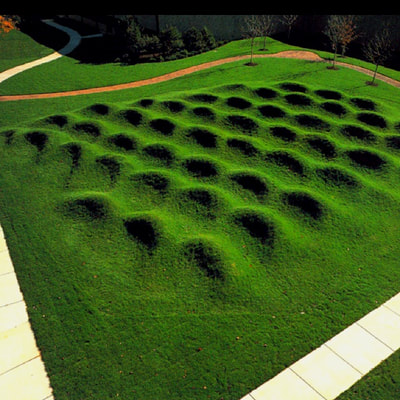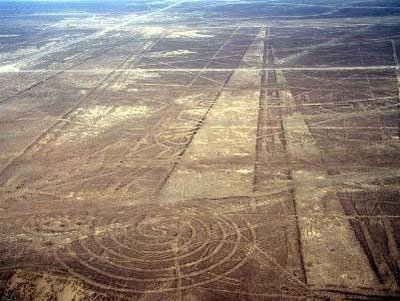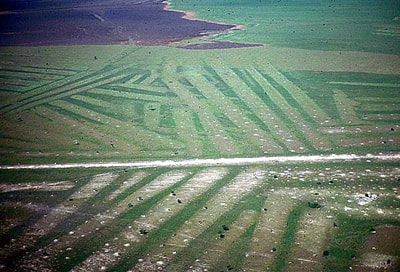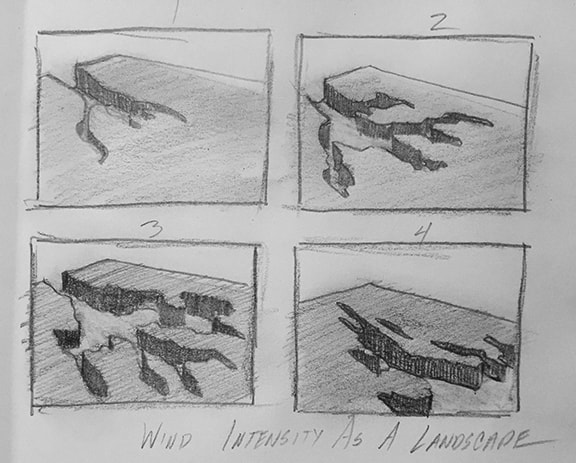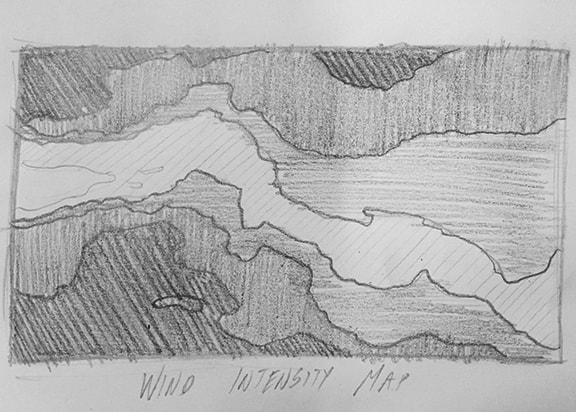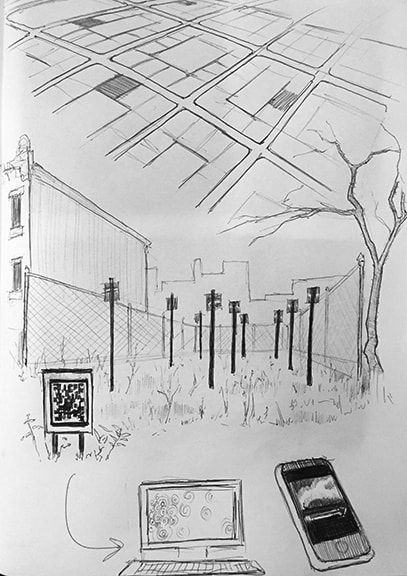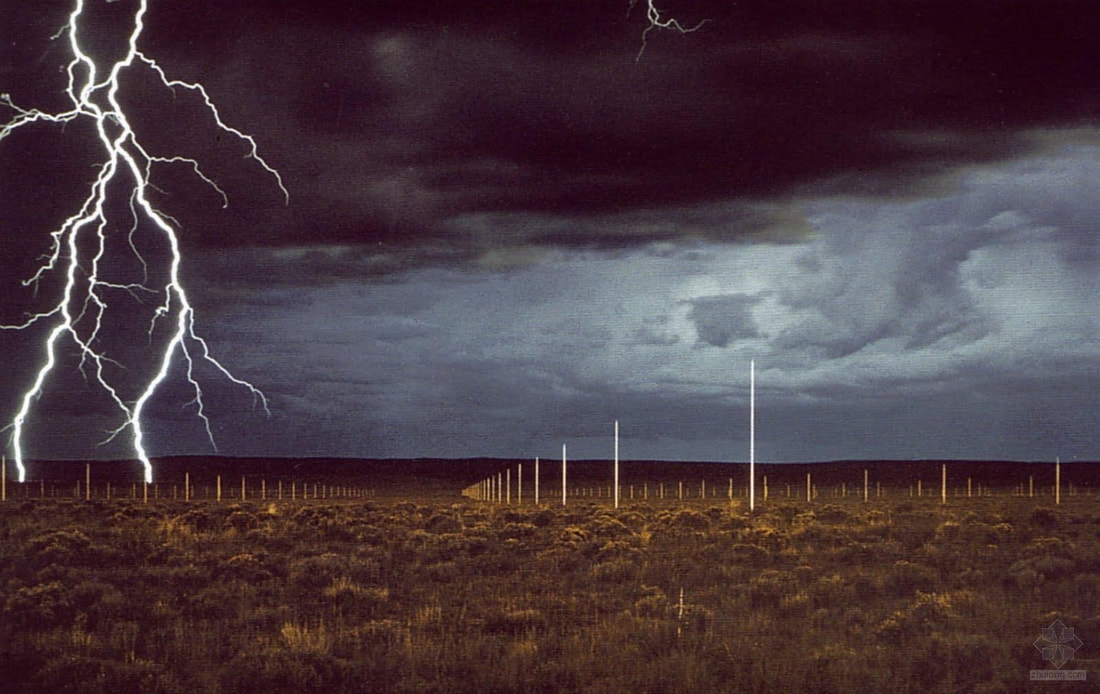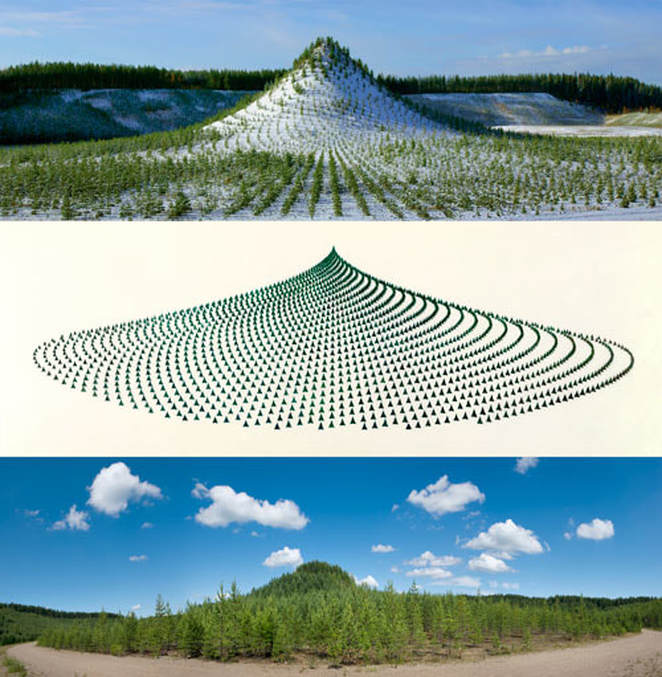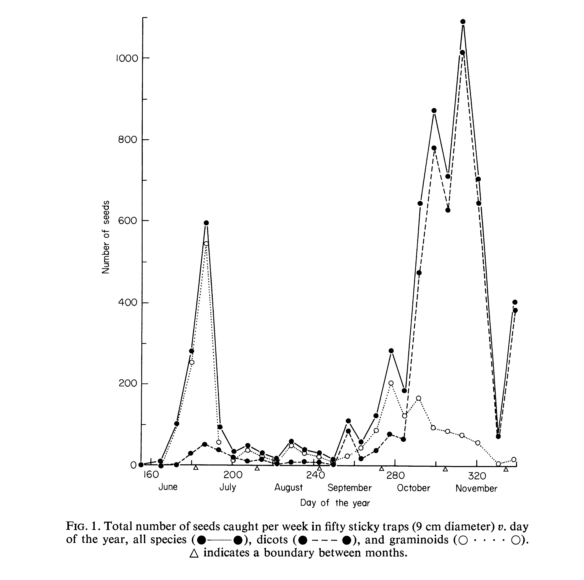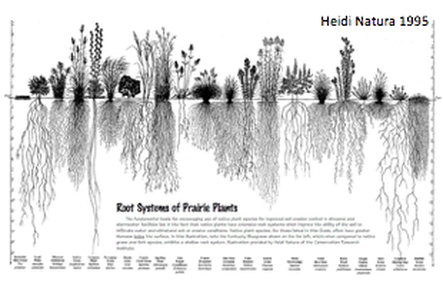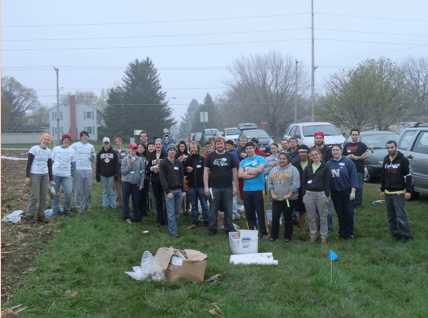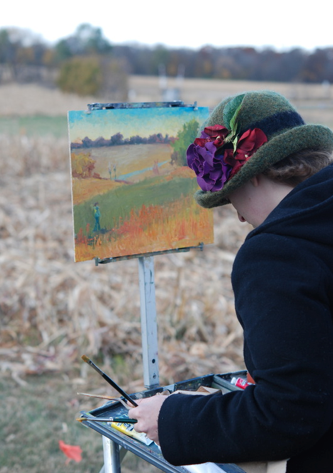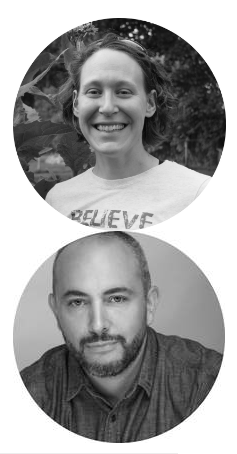|
Lauren Our main thought right now is to try to do some sort of prairie restoration that also has an artistic concept at its core. We are really excited about trying to do this project in a public space somehow. So either at parks, or in empty lots, etc. This is SUPER exciting to me because we could get all sorts of data from this kind of a project. I envision this project to have multiple levels of data collection. First, we could ask basic questions about how urban prairies are functioning. For example: are they supporting the same kind of plant diversity as non-urban prairies? Do they support diverse pollinator communities? How do soil microbes respond to prairie plantings? etc. Second, we could also ask specific questions that come from the design of the project. So, if we vary the order that plants flower or seed, we could ask questions about timing and its effects on the basic questions. Third, since we are doing a science/art prairie, we could ask questions about how the prairie influences people’s opinions about prairie conservation. I am really interested in learning if people prefer prairies with an artistic concept to a “regular” prairie where we seed randomly and homogeneously. Despite the main idea that we really like, Ken and I are continuing to fight the urge to pick one idea and stick with it, and are continuing to brainstorm new ideas. This has been really beneficial because I think we keep coming up with new and potentially better ideas! I am thinking about it as new ways to come up with a cool concept for our prairie- but it may not end up being an artistic prairie ☺ Ken brought up a bunch of ideas he had been thinking about as we discussed them. He was impressed that I was able to come up with matched scientific questions that we could ask for all of his crazy artistic ideas. So I think we are a good team because we both have lots of ideas. I have to give some credit to my ideation from my PhD advisor Stan Harpole. He’s the master of ideation. One idea that Ken brought up was thinking about wind patterns and trying to find a way to measure the wind and then display it continuously. He mentioned it could be very meditative. I am a big fan of this idea because I am very interested in mindfulness and meditation. I think it helps calm my anxious mind. As mental health issues are pretty strong in scientists of all ages, I like the idea of adding another layer on to our artistic design. One that helps people calm their minds. Blogged while listening to Jolene 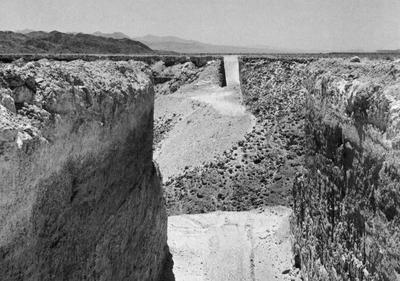 Double Negative Double Negative Ken The conversations with Lauren have been super interesting and proving to be very educational for me. Beyond the topics we continue to come up with as potential subject matter for our collaboration, I find our ancillary conversations really interesting. One stemmed from a conversation I had with my wife Anette about the role art has played in the past often being paired with another field. In the West, this was often religion. The church leaders communed with the supernatural and brought this holy word to the common people. Artists were often hired to give people a sensory experience (paintings or sculptures in churches and later books) to help engage with this unknown, this mystery of the divine. Similarly, today, scientist pursue the unknown. It seems an opportune moment for artists to provide the public with a sensory experience for this information. Art offers a way to engage with information that is not solely logic based and intellectual. Considering some of the scale and nature of these scientific explorations, art could offer an access point for the public and make the information relatable and approachable. (This probably needs a lot more thought but interesting to see a parallel.) Lauren and I also discussed a few more interesting ideas that could be explored though a research site. One that stuck with me was turbulence and topography. Lauren explained that as plants migrate, wind and land topography (even plant density) come into play. The idea of creating a site where land forms affect this process is intriguing. In my mind these include depressions, ground ripples, sloping elevations etc. This immediately calls to mind the work of numerous ancient cultures such as the Inca, Maya, Nazca, culture of Llanos de Mojos and earthworks artists like Michael Heizer and Maya Lin. Another idea was the concept of erosion or entropy. We would somehow create a situation and allow nature to reclaim it. Whether this is image based outdoors or simple organization system, inevitably the organization would decay. The time scale of this process could be dramatic or long duration. Capturing this process is interesting. A recent video experiment of mine about erosion through generation loss may illuminate this content of erasure. erosion study- Nova Scotia One welcome conversation thread that continues for me is the opportunity to use weather or land as a material for art. All these interventions involve a beginning adjustment of the site and then a conscious release of control, allowing natural processes to take over. The artwork would be constantly evolving. The site/ experience would be like an observatory in that sense- an opportunity to contemplate a phenomena as it unfolds.
0 Comments
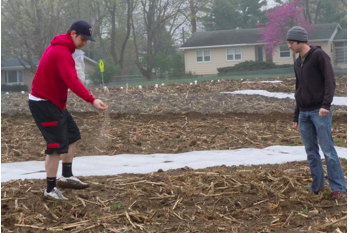 Lauren Ken and I have been exploring several concepts that we find interesting and discussing how we can put them into some form of ecological art (art that solves ecological problems, and we want it to also provide ecological data!). One idea that I’m really jazzed about is thinking about how to create prairie restorations in a way that has artistic concept behind it. When restoration ecologists typically seed a prairie, they first choose a seed mix that is native, and often that is heavily weighted towards forbs (think: wildflowers, anything that is not a grass) because grasses can dominate in restored prairies. Then, these seeds are scattered as homogeneously as possible throughout the sites. Here is a picture of one of our Iowa State undergraduate English students helping us seed the prairie in the typical way. However Ken and I discussed for a long time, what if you could plant a prairie in a way that changed through time (within a year and across years). We both agree it would be really neat to design a prairie restoration with an artistic concept in mind, but then see how the prairie “picture” evolved through time. There could be really straightforward data to collect, including does this artistic prairie function in the same way as a typical prairie – for example, does it have the same soil qualities, or does it support the same communities of insects and pollinators? We could also ask really interesting social science questions as well, about how well do local citizens connect with the prairie, and concepts related to native landscapes and conservation, and does that change depending on if the prairie has an artistic edge to it or not. 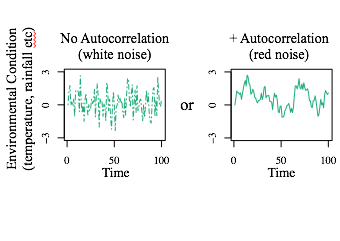 What the artistic concept could be, we have not yet decided. We are currently thinking about a bunch of really neat themes. One for instance, is stochasticity, or the balance between randomness and knowingness. I love the idea of random, and thinking about the different kinds of random (yes, there are different kinds of random… and random things can be autocorrelated in different colors - which have different sounds!) Another concept we talked about was erosion. So Ken likes the idea a lot, and mentioned that if you take a picture of something, then save it as a .jpeg (I think this is the file format…), take a picture of it, then save it as a .jpeg over and over – eventually your image will erode completely to be a gray blur. This is super interesting to me! And we began thinking about how our “image” in the prairie might erode through time via dispersal and colonization, two things I really like to think about! We are thinking more about these cool concepts this week, and will have an interesting discussion about which ideas to incorporate and how soon. Blogged while listening to Michael Kiwanuka (especially the first half) 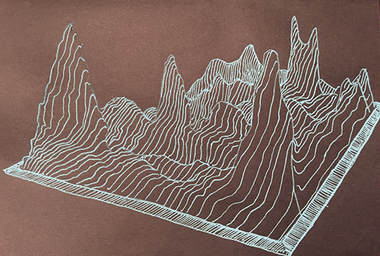 Altitude Sketch Altitude Sketch Ken During the last conversation with Lauren, it became apparent that we needed to follow an idea that would allow her to research and provide me with material (data or physical object creation.) While we are still compiling a list (includes very general topics such as randomness, erosion, generation loss, colonization, wind pattern, etc.) our conversation came back to restocking grasslands- the idea of intervening on a current space and bringing it back to its natural state with native plants. Lauren informed me that there is debate in this as well- what/ when is the true natural state of that area. Would that be Colonial time period, Native American time period, or post glacier or even further back? What species of plants were prolific and present? Which were recent ‘invaders’? At what point would you target in the natural evolution of this ecological system? The effects of humans on the environment are many fold- among them was how the land was used/ affected during that period of society and was it documented, if even possible.
Lauren Ken and I have been discussing how we can move beyond me describing my science and he then representing it artistically, as we both agree this would not be an “honest” collaboration. So, we have been working really hard to brainstorm ideas that are a combination of both of our skills. After some discussion on the topic, our aim is to create art in a way that can also produce scientific data. Having this goal in mind has made me really excited to work on our collaboration because I feel like we can both get something out of it professionally, and then I get to work in a realm of science that is new and exciting and hopefully more publically accessible. I think a lot about how to get people excited about science – and encouraging the emotional connections that can promote learning. It again strikes me that with all of the emotional input that artists provide to their work, that this is a very powerful way to help people connect to science issues. Ken mentioned that he wants to help people “feel” the data – and I am super excited to try to figure out how to do that! 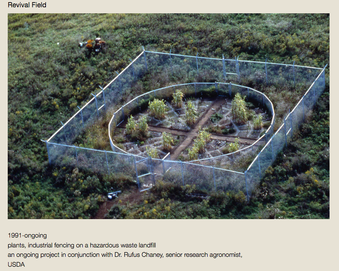 We discussed a really interesting concept that I had not heard of before, called ecological art – see this article here. In short, the article encourages artists to think beyond using static art, like sculptures in a park etc, to represent important ecological issues, but instead create art that also solves ecological problems. The article provides examples of artists like Agnes Denes, who created the artistic “Tree Mountain”, where she artistically arranged trees that will also help re-forest an area and store carbon. Or, artist Mel Chin, who created artistic designs with plants on a superfund site, where the plants would inspire an interest in cleaning up the heavy metal contamination in the soil, and his plant-art creations would actually do just that! I am SUPER interested in this idea, and had never even considered this before. Maybe there are ways to do the experiments we have been doing in science forever to solve ecological problems, in an artistic way that also encourages more audiences to become interested in also solving these problems! I look forward to more ideation with Ken about how we can do create ecological art that is also ecological science! PS: I have been thinking a lot about blogging – it is not something I have ever done before, and sort of struggle with a bit as it is weirdly personal (I am obviously not an artist). I figure I need to find my “voice”, and have been fighting the urge to start every blog with “Dear Diary, this week Ken and I have been very busy…” So instead I’m going to give you all an insight into the music that is helping me focus my thoughts on our awesome science/art collaboration! Blogged while listening to Charles Bradley Ken This week, Lauren and I spent time sending images and articles to each other as a way to share things in our field that interest us but are not necessarily our focus. Working with Lauren and her focus as an ecologist, the conversation naturally pointed to a direction in which art and environment combined. This made me recall a few artists that influenced my work and thinking, specifically Earthworks artists such as Walter De Maria and James Turrell. “Roden Crater”- James Turrell (please see a video on Vimeo of this on- going project here) Clearly not located in galleries or museums these works require the viewer to trek to far off locations and allow the viewer to focus on an aspect of nature specific to that site. As observatories, of sorts, the works frame phenomena. This concept always stayed with me. The artist is not limited to always making the entirety of the art (such as an object like a painting or sculpture) but the artist could provide the viewer with the unique opportunity to witness firsthand something in the real world that may have been unnoticed. A recent article in Hyperallergic that Lauren and I discussed– “How Can Ecological Artists Move Beyond Aesthetic Gestures?” nuanced this conversation about land and art. The article provides another direction for art in landscape. Separate from framing a natural event (geological or astrological time scale) an artwork in nature could engage with how people of today interact with the environment and/or conceptualize our relationship to it. Mentioned in the article were two artists that made work in the environment but engaged with larger concepts of ecology, stewardship, community and science. 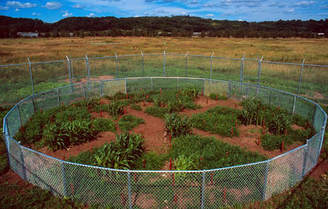 Mel Chin “Revival Field” (a collaboration with scientist Rufus Chaney.) In this project, plants that extract heavy metals from the ground were specifically planted in a design at a landfill site to detoxify a small area. Mel Chin “Revival Field” (a collaboration with scientist Rufus Chaney.) In this project, plants that extract heavy metals from the ground were specifically planted in a design at a landfill site to detoxify a small area. This seemed interesting considering Lauren’s efforts of gathering data from the field, educational outreach and bringing understanding to the mechanisms and intricacies of seed dispersal- processes that continually takes place around us but often goes overlooked. Lauren explained how she studies this through data collection, wind tunnel seed aerodynamics (some pretty cool videos that I really want to make paintings of!) pattern extrapolation, and even randomness. The concept of randomness, and chaos theory, was particularly interesting to us. Maybe some potential there as well. With this we decided to create a list of general concepts we might want to research with the hope of narrowing down as we move forward. We feel challenge is to find a project that is equally of interest to us both. Rather than segregating the collaboration into two parts (Lauren provides the data and I provide a visualization) we found we are interested in blurring this divide. We both want to be actively invested in both aspects and want to learn from the science and the art of the project. Lauren Ken and I spent our first week getting to know each other better. We purposefully decided to take a more personal approach because we both agree that the most productive collaborations in our respective fields come from finding good collaborators that you trust and enjoy working with. So we decided to spend some time chatting about our lives, and digging into the things that drive and inspire each other’s work. We found we actually have a lot in common -- including that we both like the same book, and the same exact scene from that same book! (FYI it’s The Windup Bird Chronicles, and the scene with the well). It was fun to hear the kind of science that Ken likes to geek out about and inspires him to be super creative. It’s such a different approach from my response to cool science, so it was fun to hear about. It really struck me both how similar and how different our process is for figuring out what to work on. I was happy to see that we both independently decided that the best way to start the process of our collaboration was basically to become friends. It reiterates to me that even across really different disciplines, we are all humans looking to make connections and enjoy our work. One intense thing I learned about being an artist, is the amount of self-introspection required. Ken described how he comes up with ideas for new art, and how he thinks about pushing the field forward. Because most of his ideas tend to come from personal experience, to move his art forward he really needs to put himself and his history out there for the world to judge. This was really impressive for me to learn about because I often think about how much of my emotional self I put into my science, and how hard it can be to get rejections or criticism. But at least I have a long line of previous research to back up my new ideas! During our second chat, we spent a lot of time throwing out ideas about possible collaborations. We both agreed that we wanted to do something beyond me explaining my science and Ken making cool visual representations of it. We want to aim for something that is truly collaborative. We discussed a lot of really interesting ideas, that include thinking about grasslands in different times and space (think space: aboveground vs belowground; think time: the patterns of seeds that disperse throughout the season). We also talked about neat ways to do artistic prairie restorations, and also exploring the concept of random through art. Ken
Before the first conversation with Lauren, I was excited but also unsure how it would go. Trying to begin a project with someone you have only just been introduced was a bit daunting. Happily, after a few minutes of talking with Lauren I realized I got lucky and this was not going to be a problem! Lauren is very positive, relaxed and pretty funny which made the conversation flow and expand. It was amazing to hear about her work with seed dispersal, work in the field, the focused thought process that goes into investigating this. (I particularly liked hearing about a past project where Lauren creating seed prototypes out of other materials, releasing them into the wind of the environment and tracking them at night with black light!!- sounds like a cool performance piece already!) As our first conversation unfolded, both Lauren and I seemed to equally feel the importance of getting to know each other as a beginning step in collaborating. While the act of figuring out a project that is both science and art is the main purpose, the act of collaboration is also the point. With that in mind we allowed ourselves the space to just become friends and talk about general things of interest. It turns out we both liked a lot of similar things- both big fans of the old TV Show The X-Files and the writer Haruki Murakami with Wind-Up Bird Chronicles being a particular favorite. It was slightly alarming that we both keyed into certain scenes in the book (the well scene in the Murakami for anyone who read the book) and individual scenes in various X-Files episodes. I thought these moments of shared interest allowed us a comfort level/ opening to share more freely. At some point, our conversation came to the origins of our particular investigations- not only how they began but what in our past may have directed us toward that interest. I think artist do this sort of self- reflection fairly regularly as we look for guidance as we explore new territories and I was curious where Lauren’s interests stemmed, what was her ‘bedrock ‘. We talked about memories, types of books you like, things you collect, etc- things that give a window into one’s content. She mentioned reading books with themes of an individual alone in the wild learning to survive in nature (and making friends with animals). She also relayed that she keeps many objects (pictures, notes, etc) as possible from her life, an archive of sorts. Those memories/ practices seem relevant to her direction as a scientist. I also shared a few memories that I thought contributed to the content of my artwork, such as fossil hunting with my family (an interest in deep time, artifacts, ancient animals), sonar testing in Seneca Lake (technology image distortion, and eventually static), visiting pre-columbian ruins (archeology, archaic technology and structures) and even my interest in Science Fiction movies and books. This wide ranging conversation I felt gave us a better sense of each other, a rounded understanding of each other’s practice, and, importantly, possible commonalities to explore in a collaboration. So maybe in this collaboration, this is Step 1- seeing where you can begin from. Lauren My name is Lauren, and I am a postdoctoral researcher in the Ecology, Evolution and Behavior department at the University of Minnesota. I am really interested in understanding how plants move (this is called dispersal), and how plant movement can naturally aid in restoring native grassland ecosystems. I love analyzing data, and thus I am constantly using statistical (think programming) and mathematical (think equations) tools to understand plant dispersal. I am currently doing field work in NW Minnesota, but will be moving to St. Louis, Missouri in October and working remotely. I am currently trying to understand how far pollinators are able to carry the pollen of native grassland plants. If you want to learn more about my research, you can go to my website here. While I have always loved science because it involves constant learning and problem solving, I also enjoy expressing science through art. In college, as part of an arts-in-public-spaces class, I painted part of a mural on evolution for the new science building at the University of Michigan. You can see me working on my piece here! After that experience I become really interested in using art to help people understand science in new and exciting ways. As part of my PhD dissertation, I helped create a prairie restoration experiment in the middle of town in Ames, Iowa with the help of undergraduate English 101 students. We restored a 4-acre prairie in a design that allowed us to understand how animals on the prairie were influencing the movement of seeds that could help increase the diversity (or number of native species) in restored prairies, which you can read about here. You can read the paper I wrote about our experiment here. What was fun about this project was that we set it up using the help of so many non-biology students. Working with students who had a humanities background was exciting because not only did they learn a lot about native lands restoration, but they also brought a creative perspective to the project. They wrote their final English essays on how the restored prairie could be used from many different perspectives (e.g. agriculturalist, conservationist, recreationist, etc). After this experiment was set up, we continued to involve other arts and humanities students by working with a graduate student in the painting program, and with a landscape design class. These students help us take our experiment and come up with artistic ways to represent the importance of native grassland habitat beyond scientific writing and graphs. I am really looking forward to working with Ken on this SciArt residency because it will be an opportunity for me to engage with artists again. And this time I am hoping to do some art of my own. Not only do I want to figure out how to express science with art, but I am also hoping that some of Ken’s art can inspire me to think of ways my science can connect with his work, creating a truly unique feedback. Ken
Beginning this collaboration, it is good to share a little about myself, my artwork, and how I came to be interested in this opportunity of working with a scientist. My name is Kenneth Millington and am originally from Geneva NY, located on the north end of Seneca Lake. I attended the Rhode Island School of Design, Providence RI (Bachelor of Fine Arts) and the School of Visual Arts, New York, NY (Master of Fine Arts). In between, I received several grants to travel and live abroad- La Paz Bolivia and London UK. After several years painting large scale murals in Philadelphia and around the Northeast, I settled into Brooklyn NY and began teaching at Parsons, School of Design. I currently teach in the First Year Program- Drawing & Imaging, Time, and various painting, digital and 3-D design courses. Teaching has emerged as a strong pursuit that runs parallel to my artwork. While my artwork may be categorized as multi-media at this point, it has always explored concepts of place. As society advances, the concept of place evolves. Technology opens new corridors both spatially and temporally. The intersection of physical space and digital space are known as informational territories (a term coined by André Lemos.) With new places being ‘made’ some of these older territories fall into abandon as technology moves beyond them. One such space is the vacant signal frequencies accessed by the antenna of CRT TVs. My work explores this portion of the Electromagnetic Spectrum particularly the radio and microwave frequencies and the subsequent ambient information found there. My practice involves media archeology-using dated technology, or an object in obsolescence, refashioned to create art. For me, a television set and its antenna can be used as a medium, not to watch narrative episodes, but rather as an amplifier of the electromagnetic environment. Much like a landscape being defined by its geology, flora, and climate, its electromagnetic signature is equally distinct. The visual data collected through the television is edited into video or reproduced as large scale painting. The videos and paintings I produce reconsider our views on interference/ disruption and our perceptions of place. Documenting television static and amplifying features allows this long consider interference to be re contextualized from a disruption to a moment of contemplation. Through this convergence of science, technology and art a modern landscape can be presented and a new index for place can be achieved. This current work, with its blurring of science and art, led me to confront scientific themes, explore nontraditional art mediums and opened new ways of thinking about artmaking. I realize there is great potential in going beyond what is familiar to an artist (traditional mediums, art history, etc.) and engaging with different kinds of information and other methods of investigation. Collaborating across disciplines allows this to happen. It offers another avenue to interact with and understand the world around us. Equally important this collaboration offers two people from different fields the chance to get to know each other, learn from each other and explore a way to work together. My website: https://www.kenmillington.com/ |

